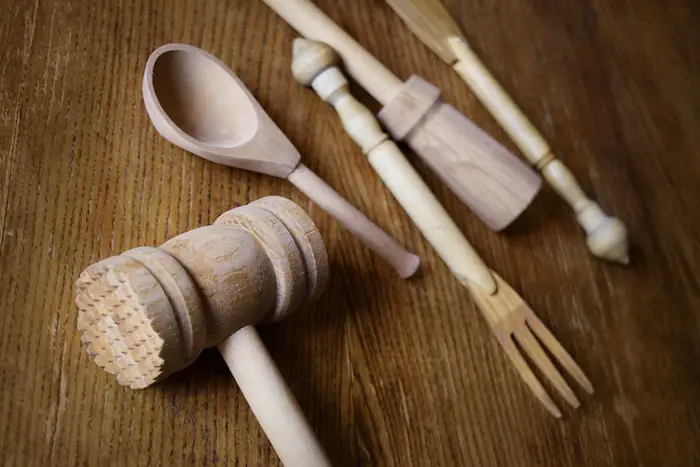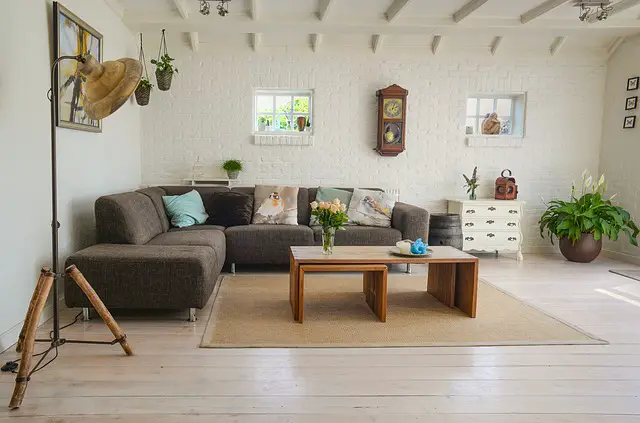Can you Put Humidifier on Carpet? (Explained)
Humidifiers are great for treating dry skin, lips, throat, and nose. They can also come in handy for symptoms caused by a common cold. However, there is a catch to it, how you use the humidifier, including where you place it determines if you reap its complete benefits.

One of the most common questions concerning the placing of a humidifier is can you put it on the carpet? The answer is no. Placing it on a carpet is absolutely a wrong idea. Other than getting sick, placing your humidifier on carpet exposes you to an array of risks such as accidents due to a slippery floor. Moreover, since most carpeted floors are not flat, placing your humidifier on a carpeted floor may hinder its normal functioning. The cost of having your humidifier on a carpet is excessively expensive as compared to placing it properly.
If you have been wondering where to place your humidifier, this article is for you. Keep reading to find out more about the effects of placing your humidifier on a carpet the best place to have your humidifier, tips of handling a humidifier, types of humidifiers and other related questions concerning humidifiers.
Effects of Placing a Humidifier on the Carpet
Now that you own a humidifier, you want to be sure that you are getting the most out of it in terms of comfort, safety, and health. As mentioned above, these benefits are dependent on how you handle or use your humidifier. As simple as it may sound it can be a challenge figuring out how to use one. A simple mistake when using a humidifier may cause you diseases that in the first place you are avoiding.
To start, placing a humidifier on a carpet will get the carpet moist. Therefore, the carpet may grow molds or mildew with time. Molds, mildews and a dump environment fuel most cases of flu, allergies and may even lead to food poisoning if exposed to food.
Moreover, placing the humidifier directly on top of the carpet means that any excess water or spillages will dampen the carpet, and encourage the molds and mildews. Other than that, you do not want to spill the water from a humidifier; this is because a spill from the humidifier can cause long-lasting damage to your carpet or make the floor slippery and cause accidents.
Another risk of having your humidifier on a carpet is that it may interrupt the optimum functioning of the humidifier. It is recommended that you place your humidifier on a flat surface. On the other hand, it is normal for a carpet to have folds causing the surface to be irregular, not flat.
So when you place your humidifier on a flat-carpeted surface, the process of delivering water to the heating element of the humidifier and releasing the mist into the air can be disrupted by not having a straight humidifier. The result is a compromised humidifier.
The Best Place to have a Humidifier
Knowing where to place your humidifier is very important, I cannot emphasize this enough. However, note that there is no perfect place to place a humidifier, the best there are are some guidelines to make sure you are doing it right.
First, placing your humidifier in the living room may seem like the most viable option, with the aim of everyone benefiting. Nonetheless, you can always place it in your bedroom if you want. Place the humidifier where it is needed most, especially if its use is beyond comfort.
Second, humidifiers should be elevated at least 2 feet off the ground. This because the surfaces directly below the humidifier can become moist, causing them to be slippery and susceptible to accidents.
Other than accidents, if the surfaces are wooden, they are likely to grown molds that cause impending danger to your respiratory health. Also, the moister from the humidifier may cause damage to your wooden surface.
Besides, placing your humidifier on an elevated surface means that you are keeping it away from children, a vital safety measure.
Third, place your humidifier away from a metallic surface to avoid rusting caused by spillages or mist droplets. It is therefore recommended, you place a tray or any other water-resistant cover underneath the humidifier to trap any droplets. You can also place a towel under it on condition that you change the towel every time you use the humidifier, as a health standard.
Still, on the best place to have your humidifier, avoid placing it near a vent. Air coming through the vent is warmer and drier than the rest of the air in the room. Therefore the moist air from the humidifier is intercepted and the built-in humidity gauge I likely to read lower relative humidity than the real levels of humidity. To avoid such instances place your humidifier at a central location.
Tips on Handling a Humidifier
Owning and using a humidifier goes beyond placement. Here are other key factors that you should consider when using them:
- Use a Hygrometer to Measure Existing Humidity
Before using a humidifier, use a hygrometer like this to determine the humidity levels in the room. You only need to humidify the air if the humidity is less than 40%. If the existing humidity is more than 50%, do not run the humidifier. Excess moisture can lead to mold issues.
For easier use, hang the hygrometer in the room making sure that it functions correctly. Alternatively, you can purchase a humidifier with a built-in humidistat like this. The humidistat controls the moisture levels based on your preferred settings.
- Clean you Humidifier Regularly
Do not store a humidifier with a wet filter and without cleaning. Before storing, clean, disinfect then make sure it is dry completely.
A humidifier that is not cleaned regularly can be an easier source of spreading bacteria in the room. This is because warm water breeds bacterial growth quicker than cold water. Therefore, if you are not going to clean it regularly you might as well avoiding purchasing one altogether.
You can use vinegar and a bleaching agent to clean your humidifier. When cleaning you do not necessarily have to change the permanent filter, just make sure you clean and disinfect it as well.
Besides, after storing your humidifier avoid using it directly without first cleaning it. I know it seems like a load of work but the thing is, even the slightest remains of water can promote the growth of bacteria. Therefore, if you use a bacteria-infested humidifier, the chance of spreading bacteria in your room is high beating the need for a humidifier in the first place.
- Germs and Bacteria Control
Some humidifiers have inbuilt features that prevent the growth of bacteria in the water tank. For the humidifiers that use silver sticks for bacterial protection, the sticks need to be replaced occasionally. You can also use the nano or silver ion technology to keep the bacterial growth controlled.
However, note that this does not rule out the role of regularly cleaning your humidifier. If anything, cleaning is the most efficient way to control bacterial growth.
- Refilling the Humidifier
When referring to the capacity of a humidifier, we look at the amount of moisture output over 24 hours. To achieve the moisture output, you may have to refill the water tank more than once.
For instance, a one-liter unit running for 8 hours will need to be refilled daily. A big as a 10-gallon humidifier will also need to be refilled regularly. The standard pattern of refilling your humidifier is daily.
Note that when refilling your humidifier, especially for a portable unit, you should empty it, wash, and then dry completely. This is done to avoid the propagation of potential bacteria caused by the presence of stagnant water.
- Changing the Filters
Most manufacturers recommend that you change the filters every month. This, however, is subject to change depending on several factors.
First, if the water you use has a high mineral content, the scale may build in the filter and disrupt its proper functioning. In this case, you should change the filter as soon as you notice an excessive buildup of white material that cannot be cleaned.
Other factors that can make you change your filter earlier are smoke and molds because of water left in the humidifier. Be on the lookout for any foul smell from the humidifier. It is the easiest way to realize you need to change the filter
Types of Humidifiers

Now that you have tips on how to handle a humidifier for the optimum results, here are types of humidifiers you can choose
- Warm mist humidifier– these humidifiers use electrical power to heat the water and produce a low-temperature vapor in the form of steam. They are mostly used for treating congestions, cold and during winter. The disadvantage of this humidifier is that they add heat to the room as they release the warm air.
- Cold mist humidifier– they use a low power method such as the ultrasonic device to produce a fine mist at room temperature. They are best for the dry climate and they run their operations almost. Cold mist humidifiers are also preferred for energy saving.
- Evaporative humidifiers– for this humidifier water is heated and evaporates assisted by the fun in the room to raise the humidity. Evaporative humidifiers are designed in a way so that they cannot raise the humidity too high; that is, past 60% of the intended room.
Related Questions
Can I place a humidifier close to the bed?
Although there are no proven health risks of placing a humidifier close to your bed, it is recommended that you place it a few feet away from your bed on an elevated flat surface. This helps to distribute the moisture evenly in the bedroom.
Also, when sleeping, our body temperatures fluctuate, as such having excess moisture from a humidifier placed close can cause you to be uncomfortable when sleeping. Other than that, excess moisture can bother your nose and throat. Therefore, unless you are looking for sleepless nights, place your humidifier far from your bed.
However, if you are easing severe congestion, placing your humidifier close to your bed, temporarily, can be very helpful. This is because warm moist products create warm air in the form of steam. The moist warm air from the humidifier helps to open the sinus and nasal passageways clearing the congestion.
How do I decide on the size of the humidifier to buy?
First, note that it not about the size of the humidifier but the size of the room you intend to add moisture. Every humidifier is designed to release moisture for a certain square footage coverage.
As such, the first step is measuring the size of your room. With the room’s size, you can match a humidifier that will function efficiently. When measuring the size of the room, be careful not to overestimate the room’s size. This may end up to excess moisture that is hazardous.
See Also:
Can You Put An Exercise Bike On Carpet?
Can You Put Heavy Furniture On Vinyl Plank Flooring
Can You Put A Treadmill On Carpet
Can You Put A Computer On Carpet?

